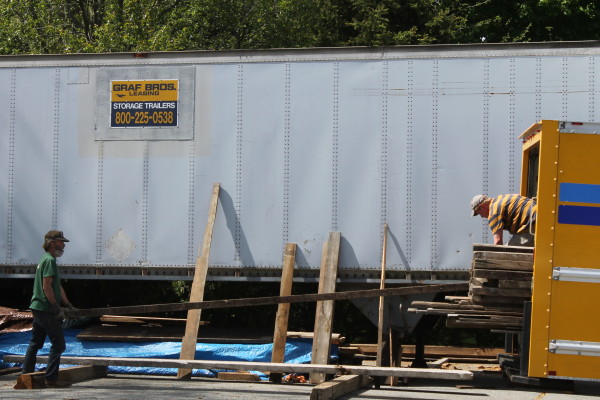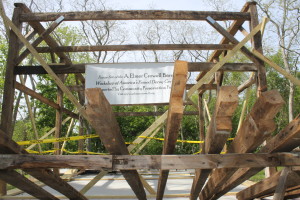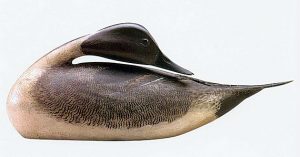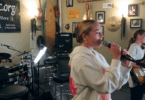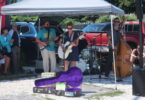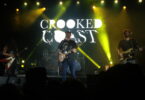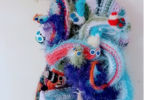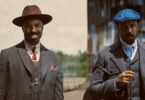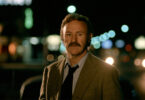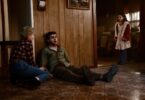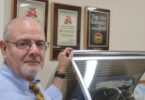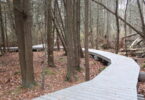HARWICH – Restoring the old workshop of legendary bird decoy carver Elmer Crowell has an element of, “If you build it, will they come?” said Jeremy Gingras, who is helping to spearhead the project.
And yet Gingras, chair of the Brooks Academy Museum Commission and Executive Director of the Harwich Chamber of Commerce, said reaction to the plan to rebuild the workshop has him encouraged. “Many people have reached out to me from all across the the world. It’s been eye-opening,” said Gingras. “Geez, he may be even bigger than we thought.”
Crowell’s East Harwich workshop was torn down in 2008 due to its bad condition, and the pieces have been stored in a trailer on the grounds of the Brooks Academy Museum. There were tentative plans to move to the Heritage Museum in Sandwich but those changd, and instead the workshop is being rebuilt on the grounds of the Brooks Academy Museum.
About a month ago, a foundation was set. The skeleton post & beam frame is up and this week, the builder, David Ottinger and his son, Jonathan, brought some old hemlock wood from New Hampshire to supplement the pieces of the Crowell barn that still exist.
According to Gingras, “We can use about 75 percent of the original material.”

Jeremy Gingras: “Many people have reached out to me from all across the world. It’s been eye-opening.”
“Our goal is a ribbon-cutting in the third week in July,” said Gingras. “The project itself really isn’t that complex,” said Gingras.
Ottinger, of David Ottinger Antique Buildings & Materials of Cambridge and of Deerfield, NH, said, “It’s relatively straight forward.”
Before the barn was disassembled in 2008, said Ottinger, there was an extensive photographic record made. Laying the material out on the ground made it easy to figure out how it fit together, said Ottinger.
In addition, said Gingras, “We had a timber-frame guy in to inventory it and put together plans.”
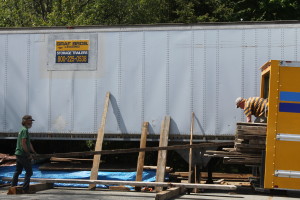
Carl Ahlstrom, left, and Jonathan Ottinger unload extra hemlock from New Hampshire to fill in for bad wood. The trailor behind them holds the Crowell house, in pieces.
Still, said Carl Ahlstrom, of Brewster, who works sometimes with Ottinger, “In this case, there was not a lot of information. It’s a little bit like a puzzle.”
As the puzzle of rebuilding Crowell’s workshop is being solved, Ottinger said people stop by whenever he is working to gaze or ask questions. “This has really captured the imagination of the community. It has resonated with a lot of people,” said Ottinger.
“This building had a particular meaning and purpose,” said Ottinger. While preserving it is great, Ottinger said, “I don’t think we do it enough. We’re tearing stuff down left and right.”
.
But the Crowell building and its history has particular resonance. It’s an intriguing story too because Crowell’s decoys now sell for as much as $1 million, said Gingras. “He sold them for a couple of bucks a piece,” said Gingras. “He died with, like, four dollars in his pocket.”
Ahlstrom said, “There are people who had Crowell decoys who burned them or took them to the dump. They didn’t know what to do with them.”
Years after Crowell died in 1952, the value of the decoys began to skyrocket.
Gingras was first exposed to Crowell’s carvings when he was a teller at a bank in Harwichport. “We had close to 70 of his decoys displayed,” he said. “The one behind me was actually a trout. There were birds and all kinds of other things in the curio cabinets behind me.”
Ahlstrom, who carves decoys himself, said, “I love his work. It’s just gorgeous. He just had a good eye and he was a good artist.”
— Brian Tarcy

